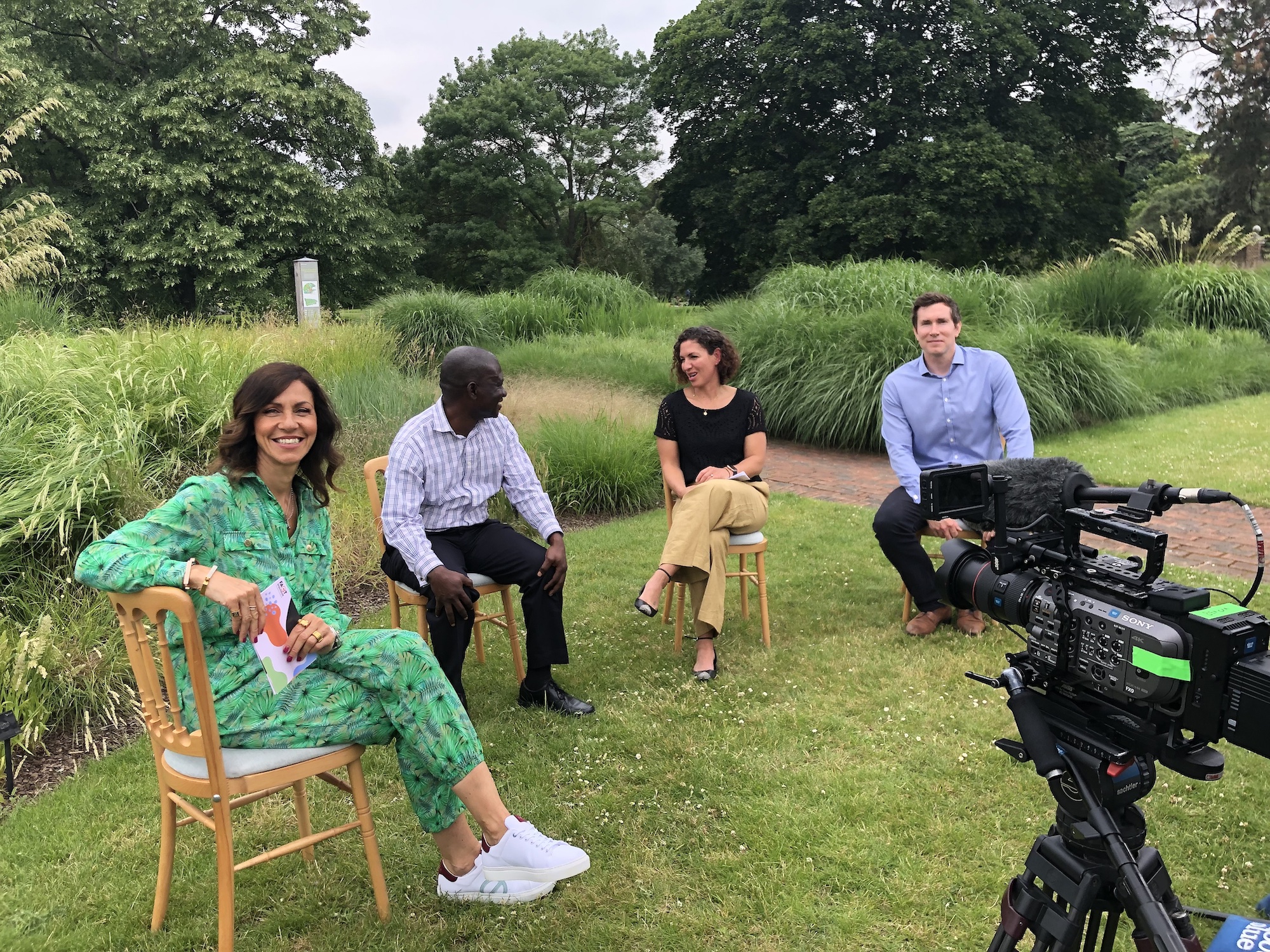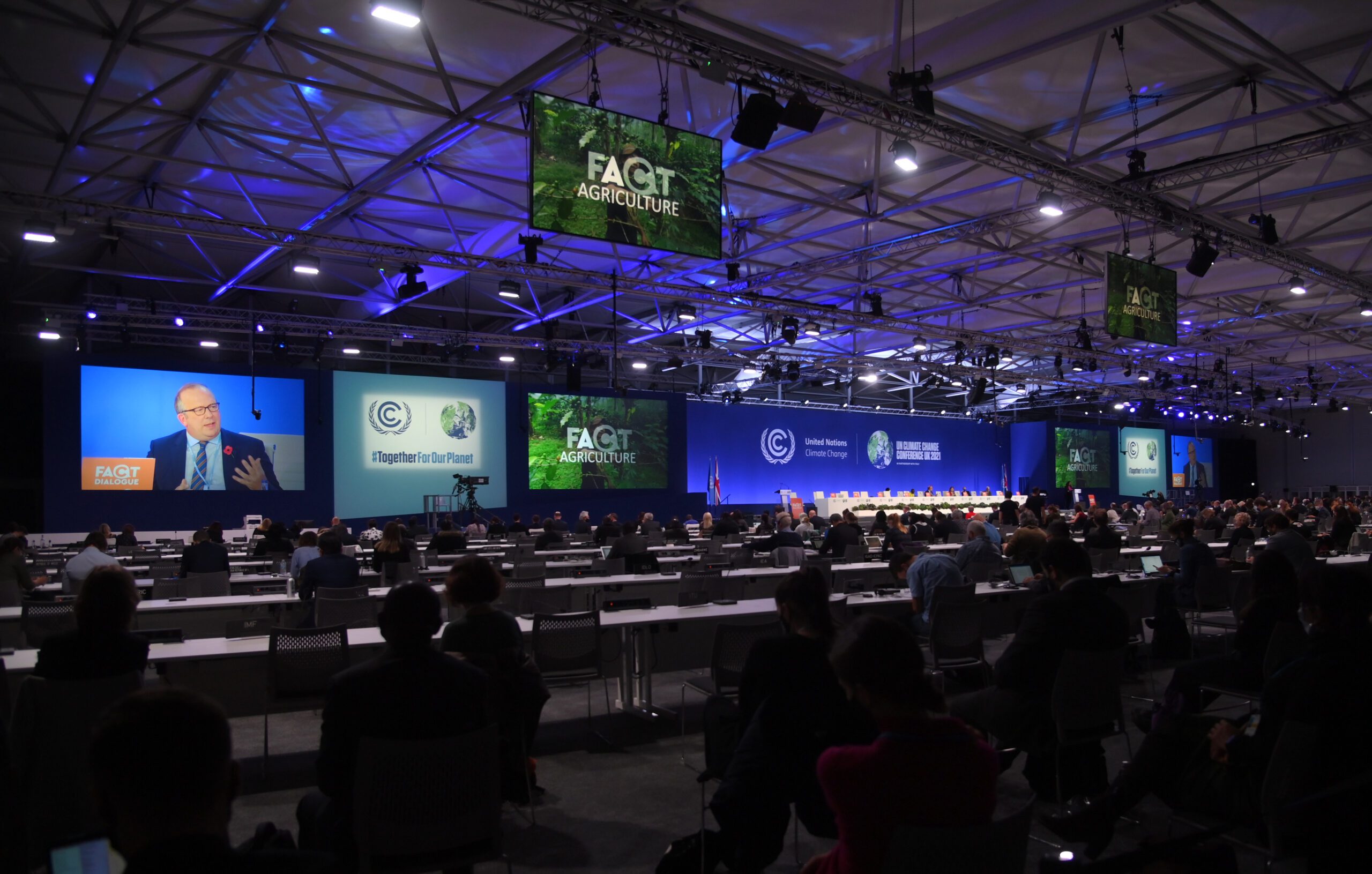Sarah Yeats, Managing Director at UK Event & Film Production Agency Sledge, who are isla members, reveals how the agency delivered for the Department for Business, Energy and Industrial Strategy (BEIS), twice, at the world’s foremost climate conference.
The brief: We were tasked by our client, Head of International Nature Campaign COP26 at BEIS, to launch FACT Dialogue and bring what was effectively a policy message to life. We put together a creative proposal to launch FACT and position it in a way that was relatable to our daily lives and the effects of climate change we have all encountered.
The response: A 90-minute live broadcast and the production and management of a plenary session for 800 VIPs during Nature Day at COP26.
In numbers:
- The What is FACT? broadcast saw 15,500 views, and over 90% of people watched the full livestream
- Social impressions reached 100,000+
- 89.5% of visitors to the event portal were new
- The FACT Dialogue treaty was signed by 30 countries, and another 25 countries have endorsed the joint-principles for collaborative action
- 2 x award nods: Winner: Best Sustainable Solution, micebook V Awards 2022, Shortlist: EVCOM Clarion Awards 2022 (Environment)
90 minutes to make an impact on the world! How did you know where to start?
Deep breaths and lots of tea! This is such a complex issue with many focus areas, so to combine this into an engaging piece and still have the desired impact without losing the key points, meant there was a lot to think about.
However, this is a subject so close to us at Sledge that we understood the importance of getting this right, which meant we weren’t short of the best creative minds to curate and deliver the right solution.
This saw our team work closely with the BEIS to gain a deep understanding of their goals around agricultural deforestation and raising awareness of their message, as well as target audience, from spring 2021.
We developed a steering committee with them, their stakeholders, and partners to ensure the content we captured, and our event delivery style, aligned with the overarching strategy, and would resonate with their target audience of both key decision makers and the general public.
How did you keep content fresh and relevant while highlighting science’s serious side?
We thought about what we as a team would want to hear, see and learn, and focused on making the content relatable at all times, while keeping the BEIS’s goals, the complexity of the subject at hand, and their target audience in mind throughout.
While there was a lot for people to take in, we focused on the notion that everyone doing something makes a huge difference, and our overarching strategy here was to adopt a TV-style approach.
This meant capturing content at a variety of locations, namely Kew Gardens, which we chose based on its green credentials, and a nearby primary school, where students asked representatives from large corporations about how they are tackling agricultural deforestation.
We did create bite-sized content, however these took the form of animations complete with bespoke illustrations, live-action imagery and explainer voice overs, as a way to share the complex information in an easier to understand way.
To create these animations, we analysed information from several verified sources, developed a distinct FACT Dialogue brand, and produced scripts and illustrations that communicated key messages.
These content pieces were then edited into the 90-minute live broadcast, which also featured agricultural producers, commitments from government ambassadors, transitions, mini ‘ad’ breaks and dedicated topic areas.
Segments from this broadcast also aired during the COP26 event we managed, and they were edited down into compelling content for social media, ensuring further reach and awareness of FACT Dialogue’s key messages.
Do you feel a multi-media approach is key for keeping climate communications accessible?
Absolutely, we all learn and relate in different ways so the more that is out there the more chance it has to appeal to a wider audience.
This was especially key for FACT Dialogue, as they wanted to resonate with the general public. This meant it was important for us to create a varied mix of content, so that it would reflect peoples’ individual consumption habits, whether that be watching a live broadcast or coming across a piece of content on Twitter.
How important do you think it was to work with celebrity influencers including Julia Bradbury and Stephen Fry?

It was important for us to leverage people that had a real connection to the subject matter and not just use a ‘celebrity’ for the sake of it. The talent we worked with do so much in and around other relevant projects that we knew came with a level of trust. So, we wanted to highlight them as well as the messaging to show how and what can be done on an individual and organisational level.
When it came to capturing particular segments, we also looked to position these well known figures in relevant spaces. We captured Doctor Jane Goodall, for example, in the Conservatory at Kew Gardens in front of the cocoa plant as she discussed cocoa.
And how did this balance with having ‘people on the ground’ including farmers and producers?
I think this was the honesty around the campaign — it wasn’t about scaremongering or presenting people with an action to change, it was about highlighting the scale of the issue and bringing it to the forefront at every level.
There are so many knock on factors that have impact across the globe, so it was important that we balanced this with the true stories to make it relatable on a number of levels.
Can you name one or two highlights of the production?
Freedom of access to Kew Gardens and all the work that is done behind the scenes there was so inspiring to see — especially for me as this is on my doorstep and I didn’t realise so much went on.
Also, giving the primary school kids the chance to interview big businesses on their sustainability measures — their knowledge and understanding was eye opening. To see them so passionate and honest about a subject and not afraid to ask the tough questions was a real privilege.
And on the flipside challenges and how you overcame them
The time scales — we had a lot to unpack, understand and deliver in a very short time period. We have a long-standing relationship with the government as a client, and because of this experience we know there are lots of moving parts, including multiple stakeholders to engage and different levels of department sign off, that can add complexities to the delivery piece. This meant that deadlines were not always realistic in such a setting, and we needed to adapt quickly and efficiently.
Another key challenge was around ‘how do we share these complex messages in ways that will resonate?’ We addressed this by shooting in unique locations, sourcing a seasoned and passionate presenter in Julia Bradbury to carry the narrative, and developing bespoke animations to bring the story to life.
You also curated BEIS’s slot for Nature Day at COP26. What was that experience like?

It was a privilege to be in a space with leaders fighting for change, it was incredible, and we had a huge appreciation for the work that goes into delivering a COP, from the planning and build, to access, logistics and delivery, across so many people and different industries. It’s no mean feat on any level and it’s done with a real belief in, and passion to, make a change.
It was also an honour that the BEIS team were so pleased with our work on the broadcast, that they looked to us to produce and manage their Nature Day event, which took the form of a plenary session for 800 VIPs.
Here the aim was to reveal a signed roadmap detailing actions the countries the BEIS had secured to support the initiative would take after COP26, and gain ongoing support so that FACT Dialogue could make a long-term difference in reducing agricultural deforestation on a global scale.
For this event we expanded upon the creative design we developed for What is FACT? across screen content, and included highlights from the live stream throughout.
The plenary was hosted by Rt Hon Theresa May, Pamela Cook-Hamilton and Ellie Goulding and featured an animated presentation (which we managed from start to finish), ad breaks complete with narrations from celebrity friends of the BEIS, and opening and closing videos.
Despite very tight lead times and limited resources, we successfully set the stage with high-energy walk on music, a musical performance by singer Beatie Wolf, and handled stage management including VIP celebrity movements, ensuring the session ran as smoothly as possible.
Furthermore, our filmmakers were selected to create three additional animated opening films for other BEIS initiatives at COP26.
How did it feel to win a string of awards for your work?
Blimey awesome! It’s fantastic to be recognised for the work we do, but when it also relates to something you have a real passion for it’s all that bit greater.
You are also helping to curate BEIS’s segment at COP27. Can you tell us a little about that?
We are so pleased to be continuing the journey with them. The success of Nature Day at COP26 in Glasgow last year was the announcement that 30 countries had agreed to a roadmap of action to tackle deforestation around the globe.
A lot of work has been happening over the last 12 months to build on this, by widening the lens from purely deforestation to the broader issue of land use and forests.
The event at COP27 is therefore moving away from being directly focused on the FACT Dialogue work, and includes other areas of focus to establish the event as ‘The Forests & Climate Leaders’ Partnership (FCLP).
We are helping to highlight this through the films we’re creating, which will support the event’s vision to move the dialogue more towards showcasing the efforts of committed governments and partners that are maintaining high-level attention to the issue of land use and forests, and encourage ongoing collaboration to implement solutions that reduce forest loss, increase restoration, and support sustainable development.
How are you moving the dial forward from COP26 and what differences do you expect to see at COP27?
The key difference will be that the event is focused around establishing ‘The Forests & Climate Leaders’ Partnership (FCLP).
Forests and land-use related actions have the potential to deliver up to 30% of the emissions reductions needed for 1.5 °C, and the FCLP event is therefore focusing on four key areas:
Supply Chain – the global supply chain of agricultural products is complex; we need to support farmers and smallholders to make a decent living, whilst protecting forests and ecosystems and developing global trade. To do this, countries, businesses, and local communities are coming together.
Initiatives like FACT Dialogue are supporting businesses to transition to sustainable production methods and trade, and many countries have publicly committed to act. Thirteen of the world’s largest agricultural commodity trading companies have also come together this year to reduce emissions in land use change.
This year, we need to spread the message wider to both public and private businesses, and all the pieces of the supply chain to step up and take immediate action.
Restoration – showcasing the restoration efforts in Africa, where there are 750 million hectares of land that could be restored. Seventy per cent of Africa’s land is community managed, and it is these smaller groups that are making the biggest impact.
Initiatives such as AFR100 are leading the way, showing that large-scale restoration is possible and in motion, with 42 African countries pledged to restore more than 100 million hectares of degraded land by 2030.
The Great Green Wall initiative is a huge ambition that is currently 15% underway to build the largest living structure on the planet, three times the size of the Great Barrier Reef across the width of Africa.
The important discussions taking place this year are focused on how to create financial mechanisms to directly fund these local programs to accelerate their progress.
Central Banks – exploring why central banks are important in delivering the goal of halting and reversing forest loss by 2030, and why central banks are thinking more about the role of nature in tackling climate-related risk. This year, we investigate what specific actions banks in countries around the globe are taking to respond to nature-related climate risks, including deforestation.
LEAF – (Linking farming and environment) focuses on Inspiring and enabling sustainable farming that is prosperous, enriches the environment and engages local communities.
This year we showcased perspectives from both the supply and the demand side of the largest-ever public-private effort to protect tropical forests with an announcement showcasing Volkswagen joining the LEAF coalition, to jointly protect forests at scale by avoiding emissions at the source of the supply chain and production. Also VW are focused on scaling their use of renewable energies, and protecting forests and other natural sinks.
Our latest news













